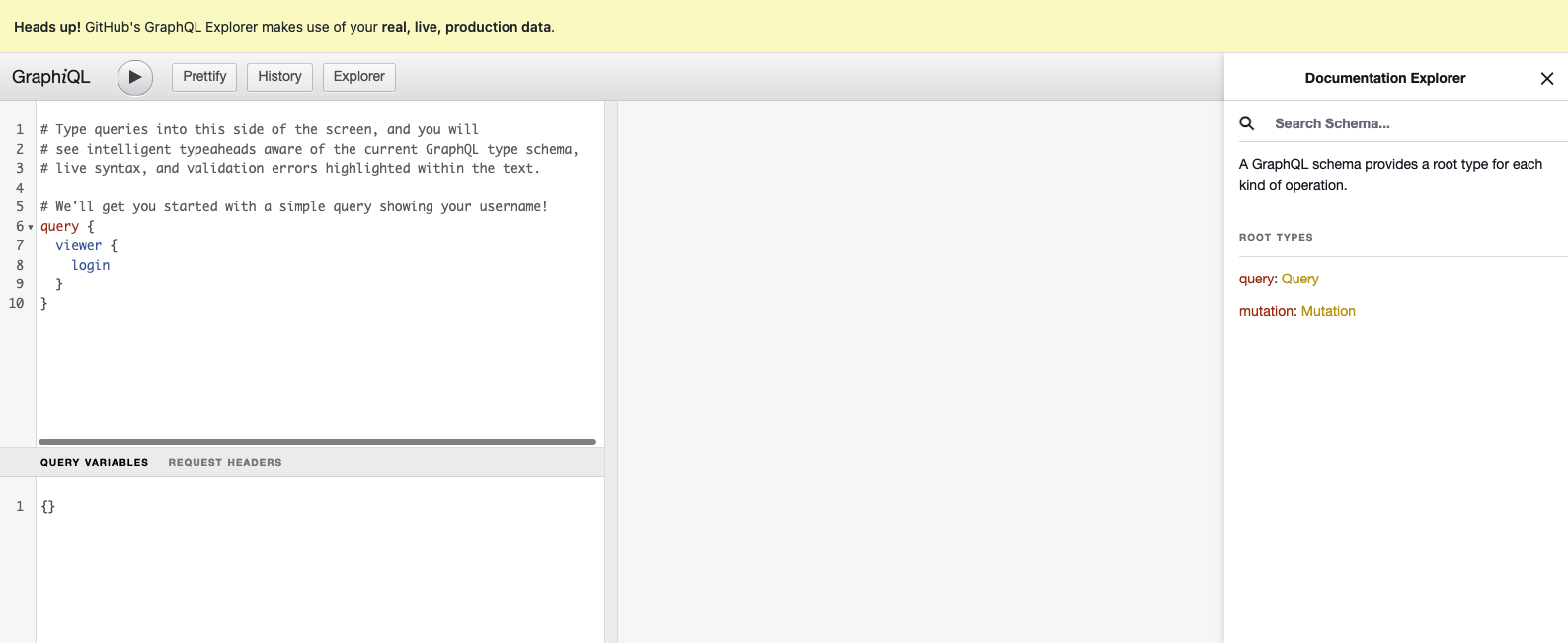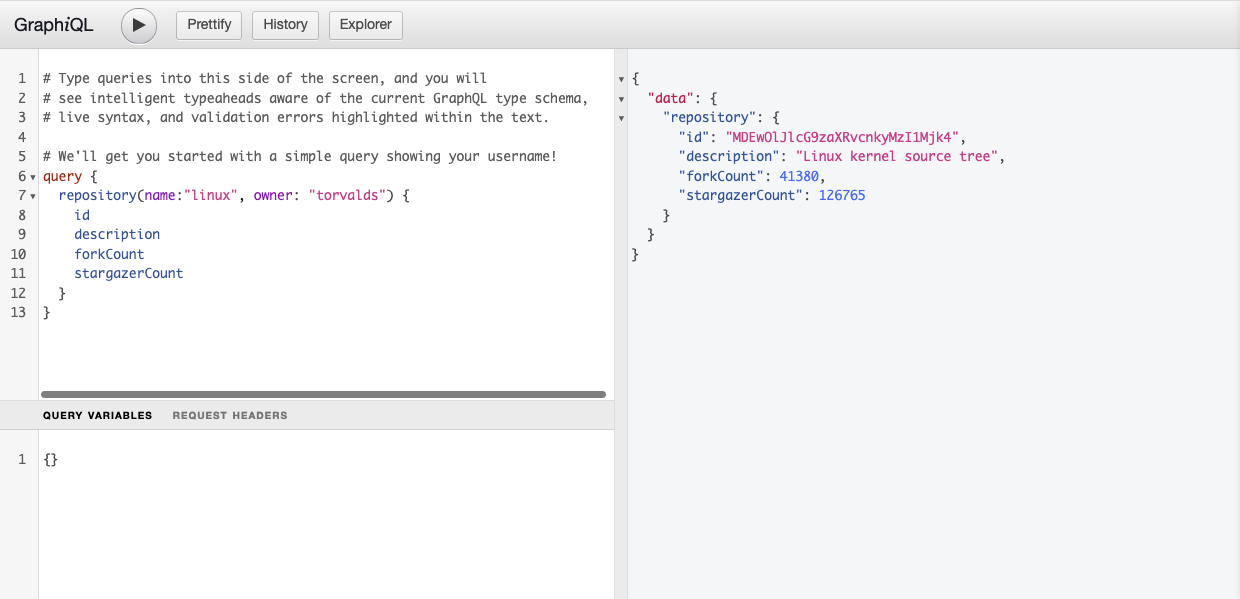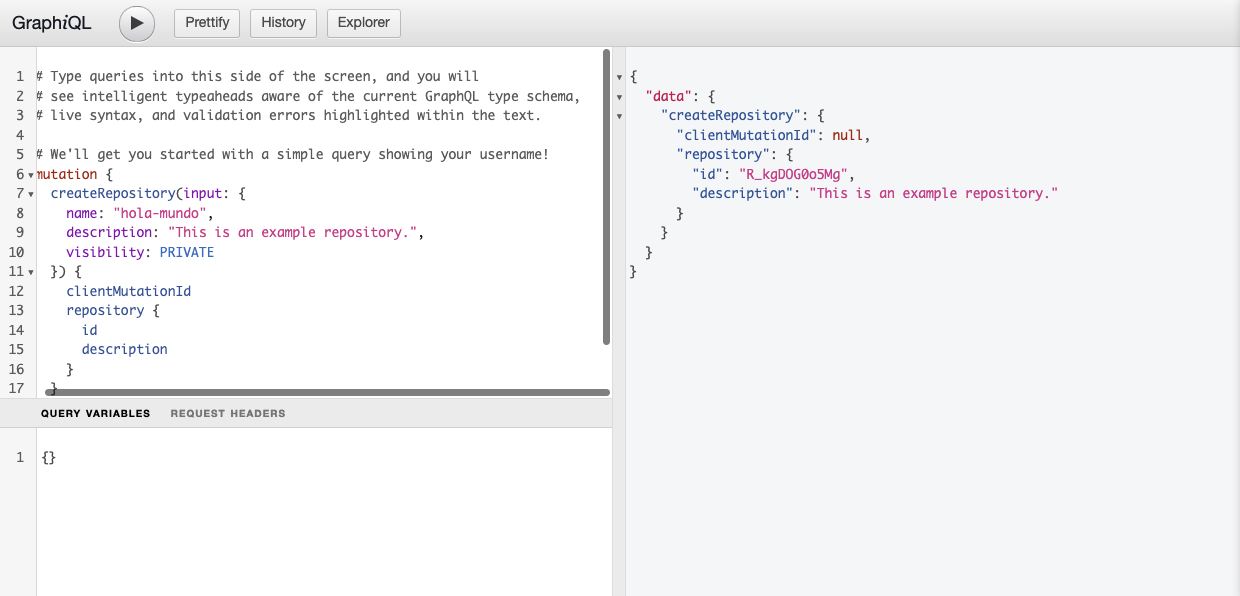An Examination of GraphQL Using Github's GraphQL API
An Examination of GraphQL Using Github's GraphQL API
GraphQL, an innovative query language for APIs, was developed by Facebook. This article will explore the foundational principles of GraphQL through the lens of Github's GraphQL API.
 |
|---|
| Figure 1. GraphQL API Explorer |
Comparative Analysis: GraphQL and REST
REST APIs often require multiple round trips to retrieve complete data sets, which can lead to over-fetching or under-fetching of data. GraphQL, in contrast, allows clients to specify the exact data set they require, streamlining the data retrieval process. This section aims to provide a succinct comparison between these two approaches using the Github GraphQL API as a practical illustration.
Query Functionality in GraphQL
In GraphQL, the query functionality offers precision in data retrieval. For illustrative purposes, one can explore the Linux kernel repository as presented below:
query {
repository(name:"linux", owner: "torvalds") {
id
description
forkCount
stargazerCount
}
}
 |
|---|
| Figure 2. GraphQL Query |
Data Modification Through Mutation
Mutation, a crucial aspect of GraphQL, facilitates the modification of data. The example below demonstrates the creation of a new repository:
mutation {
createRepository(input: {
name: "hola-mundo",
description: "An exemplar repository.",
visibility: PRIVATE
}) {
clientMutationId
repository {
id
description
}
}
}
 |
|---|
| Figure 3. GraphQL Mutation |
Industry Insights
Several leading technology firms have adopted GraphQL, citing efficiency and flexibility. The transition reflects the tangible benefits that have been extensively documented in various studies and analyses.
Conclusion
While REST APIs remain prevalent in the industry, the emergence of GraphQL signifies an evolution in data querying, offering a more streamlined and flexible method. The application of GraphQL, as demonstrated via the Github GraphQL API, provides substantial evidence of its capabilities. Future research and explorations will further delve into the characteristics and architecture of GraphQL.